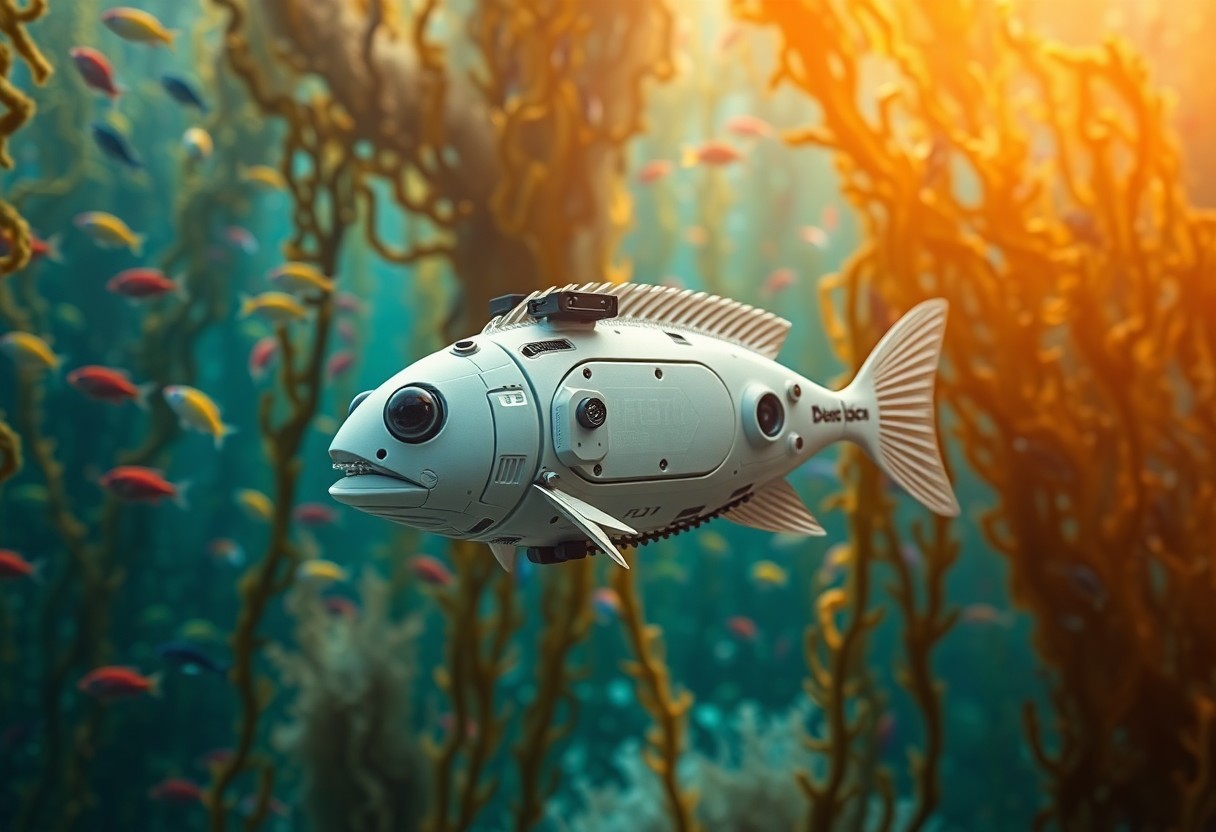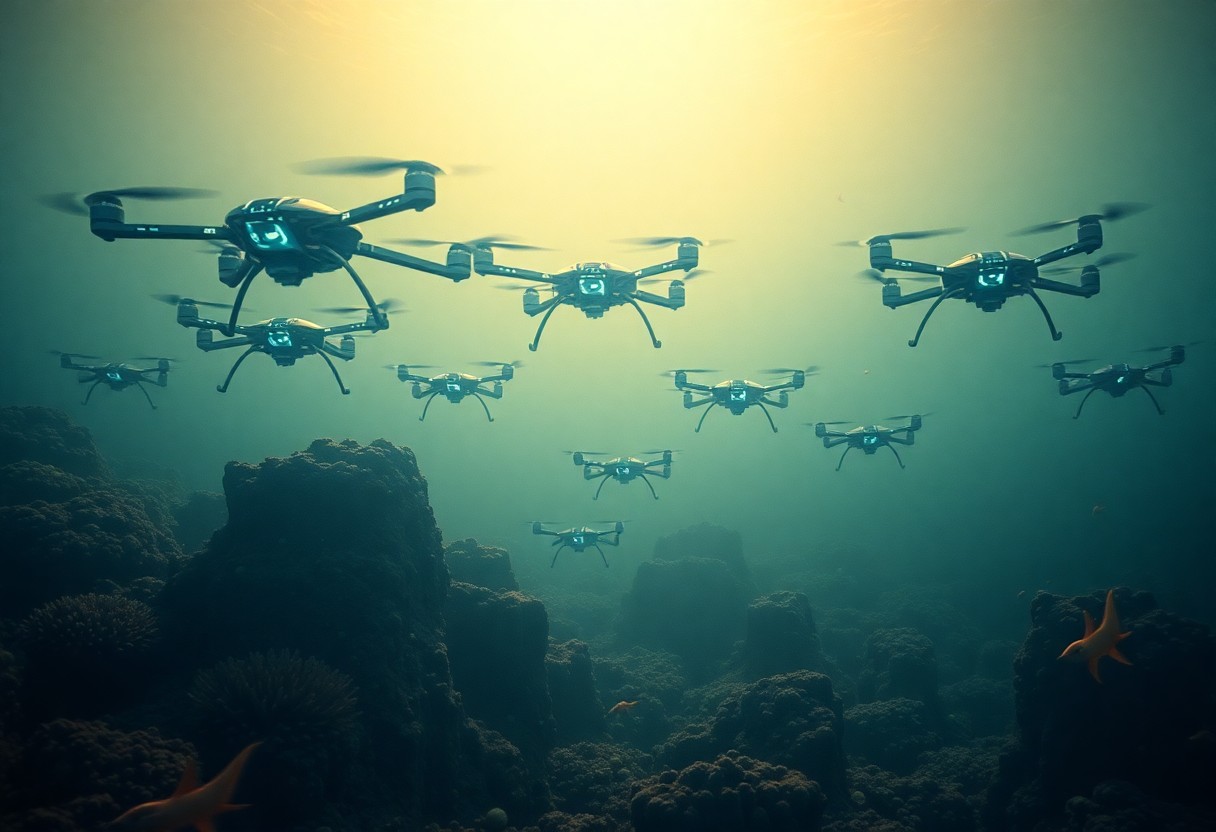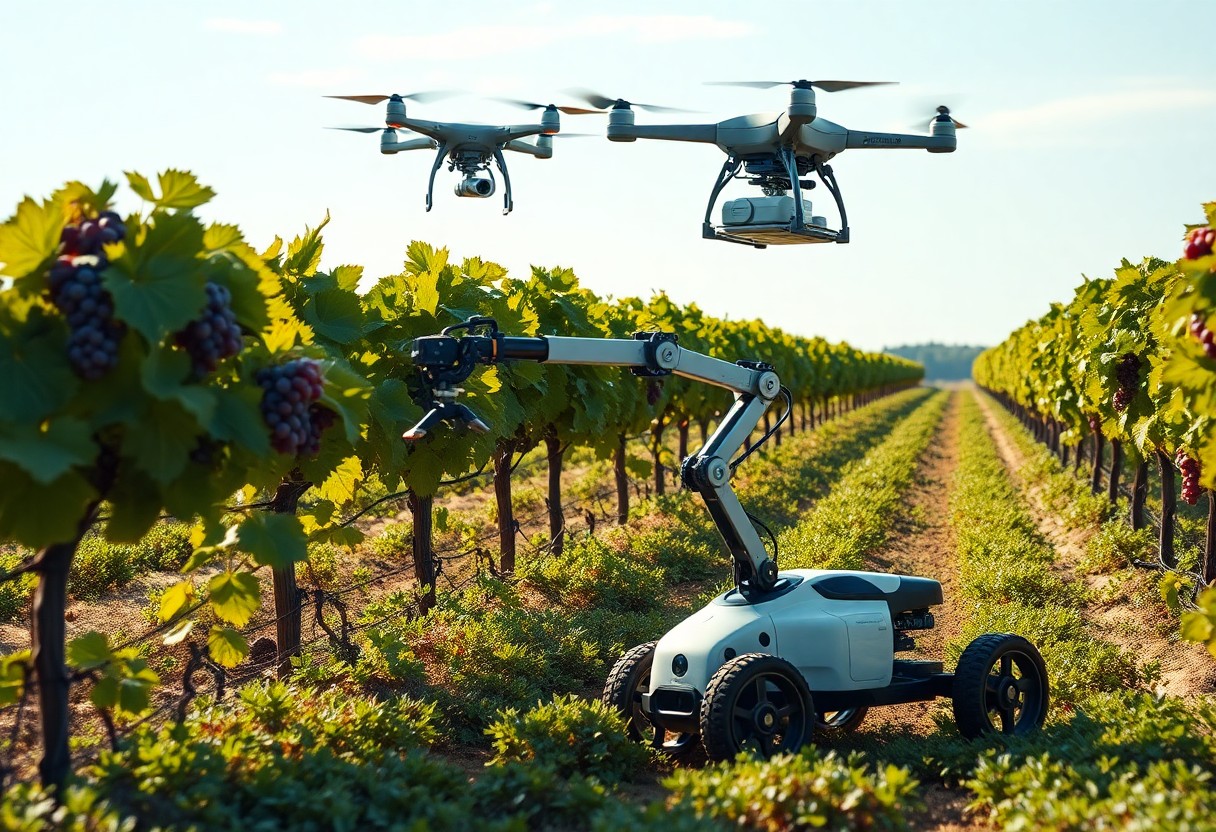Exploration of the underwater realm has always posed significant challenges, but the advent of aquatic automata is set to change that landscape dramatically. These advanced robotic systems are designed to operate seamlessly in aquatic environments, providing you with unprecedented access to marine ecosystems that were once difficult to study. From discovering new species to monitoring environmental changes, aquatic automata offer capabilities that enhance your underwater research and conservation efforts. In this blog post, you will learn how these innovations can empower your explorations and contribute to a deeper understanding of the ocean’s mysteries.

The Evolution of Aquatic Automata
Over the past few decades, aquatic automata have evolved from simple remote-controlled vehicles to sophisticated autonomous robots equipped with advanced technologies. This evolution mirrors the rapid advancements in robotics and artificial intelligence, enabling these devices to perform complex tasks in challenging underwater environments. Your ability to capture detailed data and images of marine life has also improved significantly, providing insights that were previously unattainable.
Historical Milestones in Underwater Robotics
The journey of underwater robotics began in the late 1940s with the development of the first remotely operated vehicles (ROVs) designed for military applications. By the 1970s, pioneering companies like Ocean Engineering introduced more advanced models for exploration. The 1990s witnessed a leap forward with the advent of autonomous underwater vehicles (AUVs), capable of operating independently. These milestones laid the foundation for today’s groundbreaking innovations in underwater exploration.
Key Technological Advancements Fueling Current Innovation
Recent advancements in sensor technology, machine learning, and battery efficiency are distinguishing today’s aquatic automata. High-resolution cameras and sonar systems enhance data collection, while artificial intelligence algorithms allow for real-time decision-making underwater. Additionally, improvements in energy storage, such as lithium-ion batteries, enable longer missions that increase the range and efficiency of these machines.
For instance, the integration of advanced imaging technologies like 3D mapping and multispectral sensors has significantly improved your capacity to survey and analyze underwater ecosystems. These tools enhance the precision of fish population assessments and habitat mapping. Machine learning algorithms analyze vast amounts of data collected by these automata, allowing researchers to identify patterns in marine biodiversity and make informed conservation decisions. The result is a more comprehensive understanding of the underwater world, leading to more effective exploration and preservation efforts.
Unleashing Potential: The Capabilities of Aquatic Automata
Aquatic automata boast a remarkable array of capabilities that distinctly enhance underwater exploration. These advanced machines can navigate complex marine environments with unparalleled efficiency, allowing researchers to access previously unreachable depths and discover new marine life. Their ability to operate autonomously not only minimizes human risk but also extends the reach of exploration missions, enabling you to gather critical data over larger areas. By leveraging cutting-edge technologies, aquatic automata are set to transform the way you engage with and understand underwater ecosystems.
Navigational Precision and Autonomous Operations
Equipped with high-precision GPS and advanced sonar systems, aquatic automata can navigate intricate underwater terrains with impressive accuracy. This precision allows them to explore varied environments, from coral reefs to deep-sea trenches, without requiring constant human oversight. Their autonomous capabilities enable you to deploy them for lengthy missions, collecting valuable information while you focus on data analysis and interpretation.
Sensor Technology and Data Collection Enhancements
Integrating state-of-the-art sensor technology significantly amplifies the data collection capabilities of aquatic automata. These sensors can analyze water quality, track marine species, and monitor environmental changes in real-time. For instance, some units feature multi-spectral imaging that captures images across different wavelengths, revealing insights into the health of coral reefs or the presence of pollutants. Enhanced data quality leads to a deeper understanding of marine ecosystems and can facilitate timely interventions where needed.
This enhanced sensor technology not only broadens the spectrum of data collected but also elevates the precision of analyses conducted. You can expect advancements like acoustic sensors that map underwater topography, facilitating detailed habitat assessments, or chemical sensors that detect changes in ocean acidity levels. In 2022, research teams utilizing custom-built aquatic automata equipped with these technologies reported significant breakthroughs in understanding the effects of climate change on marine biodiversity. With each technological advancement, the underwater realm becomes more transparent, revealing secrets critical to conservation efforts and ecological health.
Breaking Barriers: Applications of Aquatic Automata in Diverse Fields
Aquatic automata are making waves across various sectors, demonstrating their versatility beyond mere exploration. These robotic systems are now instrumental in marine biology research, aiding in real-time data collection on diverse aquatic species and habitats. Their applications extend to underwater archaeology, where they facilitate the discovery and preservation of submerged cultural treasures. By harnessing advanced technologies, aquatic automata redefine how we interact with underwater environments, enhancing our ability to study and protect them.
Marine Biology and Ecosystem Monitoring
In marine biology, aquatic automata revolutionize ecosystem monitoring by providing continuous, high-resolution data on water quality, temperature, and biodiversity. Equipped with sensors, these robots can autonomously traverse vast oceanic expanses, pinpointing areas of interest. For instance, researchers can deploy fleets of automata to track the movement and health of coral reefs, allowing you to gather insights into the impacts of climate change on marine ecosystems.
Underwater Archaeology and Cultural Heritage Preservation
Underwater archaeology significantly benefits from the deployment of aquatic automata, which are now pivotal in locating and studying submerged artifacts. These advanced robots can access remote sites often deemed inaccessible, using sonar and high-definition cameras to document and assess historical treasures without disturbing them. By integrating these technologies, you can uncover vital information about ancient civilizations and preserve cultural heritage at risk from environmental factors.
Utilizing aquatic automata in underwater archaeology not only enhances the efficiency of site surveys but also minimizes human risk during explorations. For example, an automaton’s ability to operate in challenging underwater conditions enables teams to gather data from shipwrecks or ancient ruins while maintaining the integrity of these sites. As they collect and analyze artifacts and structural remains, you gain invaluable insights into historical contexts, offering a deeper understanding of our past while safeguarding these pivotal connections to history for future generations.
Challenges on the Horizon: Current Limitations and Future Solutions
Despite promising advancements, numerous challenges remain for aquatic automata in underwater exploration. Limitations in battery life, communication with surface vessels, and resilience to extreme pressure complicate the quest for deeper exploration. Furthermore, the integration of sophisticated AI in these automata requires substantial research and development to enhance data collection and interpretation. Addressing these challenges head-on will be key in paving the way for a new era of underwater discovery.
Technical Hurdles in Deep-Sea Exploration
Deep-sea exploration poses significant technical hurdles for aquatic automatons. High pressure levels can exceed 16,000 psi, challenging the structural integrity of robots. Battery capacity also remains a limitation; current models often struggle with insufficient power for extended missions. Moreover, achieving reliable communication between underwater vehicles and surface teams is often hindered by water’s absorbent nature, complicating real-time data transfers. Innovative solutions in materials and energy sources will be important to overcome these barriers.
Ethical Considerations and Environmental Impact
As you deploy aquatic automata in fragile underwater environments, ethical considerations regarding their impact become vital. The potential disturbance to marine habitats and biodiversity requires careful analysis. Sustainable practices must guide your exploration efforts to minimize disruption and promote the preservation of underwater ecosystems.
Underwater ecosystems are delicate; therefore, automation-led exploration must balance scientific discovery with environmental stewardship. Noise pollution from robotic operations can disrupt marine life, particularly species reliant on acoustics, while physical disturbances can lead to habitat degradation. Establishing guidelines to limit exploration activities to specific regions and developing technologies that minimize acoustic and physical footprints is important. Engaging with marine biologists and conservationists can help ensure that advancements in aquatic automata do not come at the expense of ocean health. Ethical exploration will define the future of underwater studies and safeguard these resources for generations to come.
Envisioning the Future: The Next Frontier in Underwater Exploration
Underwater exploration is poised for a transformative leap, driven by the integration of innovative technologies and the rising capabilities of aquatic automata. With advancements in materials science and nanotechnology, future automata will not only improve durability and efficiency but will also unlock the potential for deeper and more complex explorations. These devices could soon navigate treacherous underwater terrains and conduct real-time analyses of marine ecosystems, thus offering remarkable insights into the ocean’s mysteries.
Integrating AI and Machine Learning for Enhanced Performance
Harnessing artificial intelligence and machine learning can significantly elevate the capabilities of aquatic automata. By processing vast amounts of data collected from underwater environments, these technologies can identify patterns and anomalies, enhancing decision-making in real time. Consequently, autonomous underwater vehicles equipped with AI could adapt to changing conditions, optimize their paths, and even collaborate with other devices, ultimately improving their effectiveness in mapping and studying the ocean floor.
Collaborative Efforts Between Industry and Academic Research
The intersection of industry and academic research serves as a fertile ground for innovation in underwater exploration. By pooling resources and expertise, institutions and companies can develop cutting-edge aquatic automata that push the boundaries of what’s possible. For instance, partnerships have already led to the creation of hybrid vehicles capable of conducting scientific research while also supporting commercial objectives, proving that collaborative models can yield tangible benefits for both sectors.
These partnerships have been instrumental in unlocking new technologies and methodologies. Industry giants like Ocean Infinity work in collaboration with universities such as MIT to explore groundbreaking designs for underwater drones. This synergy facilitates the sharing of insights, tools, and talent, allowing both academia and industry to scale innovative solutions rapidly. As a result, you can expect more sophisticated automation that utilizes state-of-the-art sensors and algorithms, offering unprecedented access to and understanding of underwater ecosystems.
Summing up
Following this exploration of aquatic automata, you can appreciate how these innovative technologies can transform underwater exploration. By utilizing autonomous systems equipped with advanced sensors and data analysis capabilities, you can access previously unreachable depths and gather critical information about marine ecosystems. This paradigm shift not only enhances your understanding of oceanic environments but also promotes sustainable practices, safeguarding marine life for future generations. Embracing aquatic automata could indeed redefine how you engage with and manage our planet’s vast underwater resources.







